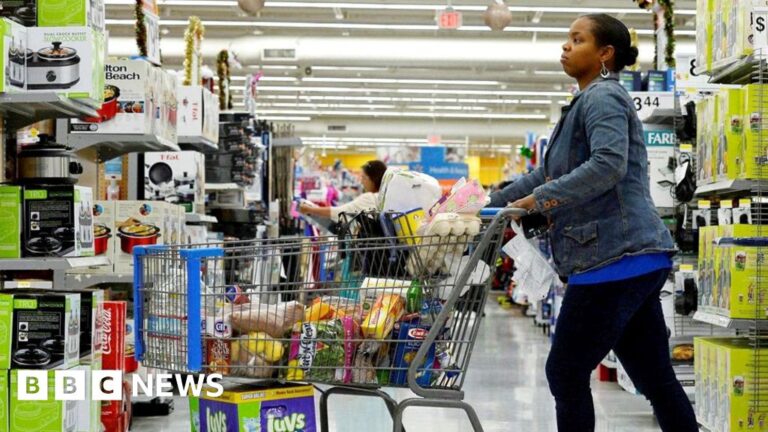- author, Charlotte Edwards
- role, BBC Business Correspondent
U.S. consumer price inflation eased slightly last month, official data showed, ahead of the decision to keep interest rates at their highest level in 23 years.
According to the U.S. Department of Labor, prices rose 3.3% in the 12 months to the end of May, down 0.1 percentage point from the previous month.
Core inflation, which excludes volatile items such as food and energy prices, also slowed, even as rent continues to weigh on household budgets.
Federal Reserve officials held off on cutting interest rates this month, even as borrowing costs remain at their highest in years.
The U.S. central bank kept interest rates unchanged at 5.25% to 5.5% on Wednesday.
The Fed also expected one rate cut this year, but policymakers were divided on the matter.
Four predicted no rate cuts, seven predicted one rate cut and eight predicted two rate cuts.
The inflation data prompted traders to raise expectations of a rate cut in September and also strengthen expectations of a second cut in December.
They see a rate cut as more likely this year as inflation has come in below some economists’ expectations, but still above the U.S. central bank’s 2% target.
Americans are still feeling the pain of rising rent and electricity prices, while food inflation remains at around 2%.
U.S. inflation rates changed for other goods and services.
Taxi fares and other transport costs increased by more than a tenth in the year to May, but the rate of increase in used car prices slowed to almost a tenth.
Lindsay James, investment strategist at Quilter Investors, said markets “remain in a state of stagnation” despite the decline in inflation.
“[We are] “We will wait until inflation falls more rapidly toward our 2% target or the economy becomes overburdened and new stimulus is needed.”
Inflation is the pace at which prices rise or fall over a particular period of time.
In the United States, the Bureau of Labor Statistics measures inflation using the Consumer Price Index.
It pulls information from 23,000 businesses and checks the prices of around 80,000 consumer products.
While the pace of average price increases has remained steady, some of the biggest U.S. retailers, including Target, have slashed prices on items like food and baby products to attract customers.
The price of milk in supermarkets fell 1.3 percent, and the prices of other non-alcoholic drinks also fell.
Fruit and vegetable prices remained unchanged.
Rent rose 0.4%, the same as in April, while medical costs increased 0.5%.
Prescription drug prices rose 2.1 percent, while the cost of hospital services increased 0.5 percent.
With the presidential election approaching on November 5th, the performance of the U.S. economy is particularly important.
As Americans continue to struggle, inflation is said to be affecting the popularity of US President Joe Biden.

